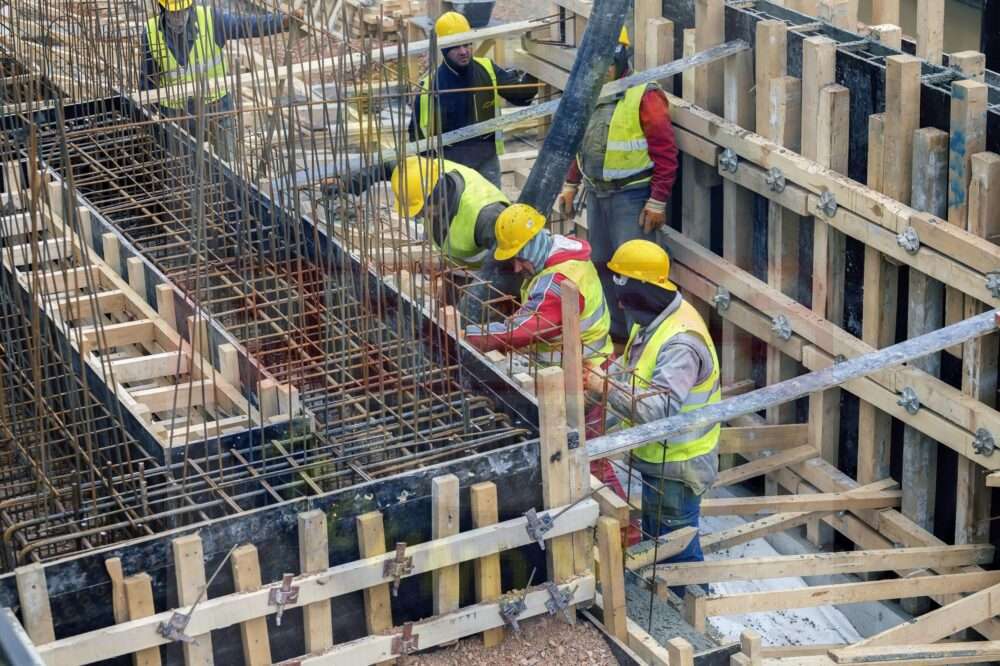Green building practices that lead to lower carbon dioxide levels,
With the environment continuing to suffer due to the excessive buildup of carbon dioxide in the atmosphere,
there is an urgent need for sustainable building practices that will help reduce carbon dioxide levels.
Green building practices are one of the most effective ways to do this, offering a range of benefits,
from reduced energy consumption to improved air quality and more.
So together we’ll explore how green building practices lead to lower carbon dioxide levels,
and the impact they can have on our environment.

What is a green building?
A green building is a structure that is designed, constructed and maintained to optimize the use of natural resources and reduce the negative environmental impacts associated with construction and development.
It is also referred to as a sustainable building or an environmentally friendly building.
Green building practices take many forms, including the use of sustainable materials,
such as wood and bamboo, the incorporation of natural lighting, the use of renewable energy sources, and more.
These practices result in lower levels of carbon dioxide (CO2) emissions, improved indoor air quality and lower operating costs.
When building green, architects and designers focus on ways to reduce a building’s environmental impact from the beginning of the construction phase to the end of the building’s life.
They look for ways to reduce energy consumption and waste, design for maximum performance,
use materials efficiently, and make better use of the Earth’s resources.
The goal of green buildings is to reduce waste of resources during construction,
to use renewable energy sources whenever possible, and to keep building materials out of landfills.
This ensures that the building is environmentally sound and sustainable throughout its life.
Green buildings can be built in both existing and new construction projects.
Structure may be renovated in existing buildings, and systems may be upgraded to be more energy efficient.
In new construction, green building principles are integrated into the design and construction process,
creating an efficient and sustainable building right from the start.
Green building projects are becoming increasingly popular in both the public and private sectors.
The costs associated with traditional building techniques are becoming more affordable,
and the benefits of green building are becoming more evident.
Ultimately, green building practices result in lower carbon dioxide levels,
improved indoor air quality, reduced energy and water consumption, and cost savings over time.

Reducing the effect of carbon dioxide
Green building, or sustainable building, is a growing practice in the construction industry that seeks to reduce the negative environmental impact of building structures.
The main goal of green buildings is to reduce carbon dioxide emissions from the production and use of materials,
energy and other resources.
By focusing on the efficient use of resources and reducing the global warming potential,
green building practices can significantly reduce carbon dioxide levels.
The most effective way to reduce the environmental impact of building materials is to reduce the number of new materials used in construction.
This can be done by selecting materials with a high recycled content,
such as recycled steel and concrete, and using reclaimed materials for new construction projects.
Reusing existing materials is an effective way to reduce resource consumption and carbon dioxide levels.
Energy efficiency is another major factor in reducing carbon dioxide levels.
Buildings constructed using green building practices are more energy efficient than conventional construction,
meaning they use less energy while providing the same level of comfort and convenience.
Green buildings can better maintain comfortable indoor temperatures while reducing energy consumption by choosing building materials
with high insulation values and installing energy-efficient systems,
such as high-performance windows and energy-efficient heating and cooling systems.
This can lead to lower carbon dioxide emissions and better indoor air quality.
In addition, green buildings can reduce carbon dioxide levels associated with the use of renewable energy sources.
Solar and wind energy are the two most widely used forms of renewable energy for green buildings,
which can reduce the need for conventional energy sources and reduce associated carbon dioxide levels.
Finally, green building practices should focus on the proper disposal of used materials.
This includes the reuse and recycling of solid waste and the proper disposal of hazardous materials.
By taking steps to properly dispose of materials and reduce the amount of waste generated,
green buildings can reduce the levels of carbon dioxide associated with them.

Reduce energy consumption
Reducing energy consumption is an important component of green building practices.
This can be achieved in several different ways:
- By using more efficient building designs that reduce the need for energy-intensive heating and cooling systems, green buildings can reduce the energy they use.
- The implementation of renewable energy technologies such as geothermal, solar and wind energy can ensure that buildings operate without relying on burning fossil fuels.
- Green buildings can further reduce energy consumption by adopting low-energy lighting and other energy-saving technologies.
By implementing these energy saving strategies in green building construction, a low carbon dioxide environment for occupants can be ensured.

Improve indoor air quality
Improving indoor air quality is an essential part of creating a green building.
By implementing sustainable practices, such as increasing ventilation and air filtration systems,
it is possible to significantly reduce the amount of carbon dioxide in indoor air.
In addition, the use of natural materials can reduce the risk of outgassing of volatile organic compounds,
a major contributor to poor indoor air quality.
By improving indoor air quality, green building practices can positively impact the environment and the health of building occupants.

Efficient use of natural resources
Green building practices are becoming increasingly popular as a way to reduce carbon dioxide emissions.
These practices focus on using natural resources in the most efficient way possible.
This includes the use of renewable energy sources, such as solar, wind and geothermal power,
and the incorporation of energy-efficient technologies, such as LED lighting and low-flux fixtures.
By reducing the use of fossil fuels, green building practices can help reduce carbon dioxide emissions released into the atmosphere.
In addition, green building practices can help conserve water and other natural resources, leading to greater environmental benefits.
By incorporating these green building practices into designs,
we can help reduce harmful CO2 emissions and contribute to a more sustainable future.
Improve waste management
One way to reduce emissions and environmental impacts is to improve waste management practices.
Efficient waste management reduces the number of resources needed for production,
as well as the energy costs associated with waste disposal.
Companies and organizations must strive to reduce, reuse and recycle to reduce the amount of waste that is put into the environment.
In addition, companies and organizations should look for more sustainable ways to dispose of waste, such as composting.
By implementing these practices, companies and organizations will not only reduce their carbon footprint,
but also reduce their economic footprint.

The effect of green building practices on carbon dioxide levels
Green building practices have become more popular in recent years, and for good reason.
Green building practices are beneficial to both the environment and individual businesses,
and can have a direct impact on carbon dioxide (CO2) levels.
Green building practices include a variety of strategies that reduce the environmental impact of construction and operations and strive to improve occupant health and reduce resource consumption.
One of the main goals of green building practices is to reduce carbon dioxide emissions.
Green building practices can reduce the energy required to operate buildings and operations by focusing on increasing energy efficiency.
This reduction in energy consumption translates into a corresponding decrease in the amount of carbon dioxide released into the atmosphere.
In addition to energy efficiency, green building practices also focus on reducing the use of materials produced through high-carbon processes and reducing waste generated during construction and operations.
To reduce carbon dioxide levels, green building practices typically incorporate renewable energy sources,
such as solar and wind power, into the building’s energy system and encourage the use of recyclable and recyclable materials.
The potential impact of green building practices on carbon dioxide levels has been studied extensively.
One study by the International Energy Agency estimates that by 2050,
green building practices could reduce global carbon dioxide emissions by up to 8 billion tons annually.
This means a decrease in global carbon dioxide levels by up to 10%.
Furthermore, green building practices can also reduce the energy costs associated with normal building operation,
leading to further reductions in carbon dioxide levels over time.
Furthermore, the initial costs of green building practices can often be offset by energy savings over the life of the building.
In conclusion, green building practices represent an important step in reducing global carbon dioxide levels.
While the benefits of green building practices vary from building to building,
the overall impact of green building practices on carbon dioxide levels is clear:
By reducing energy use and switching to renewable energy sources,
green building practices can lead to a significant reduction in the world’s carbon dioxide levels.
For more architectural news




